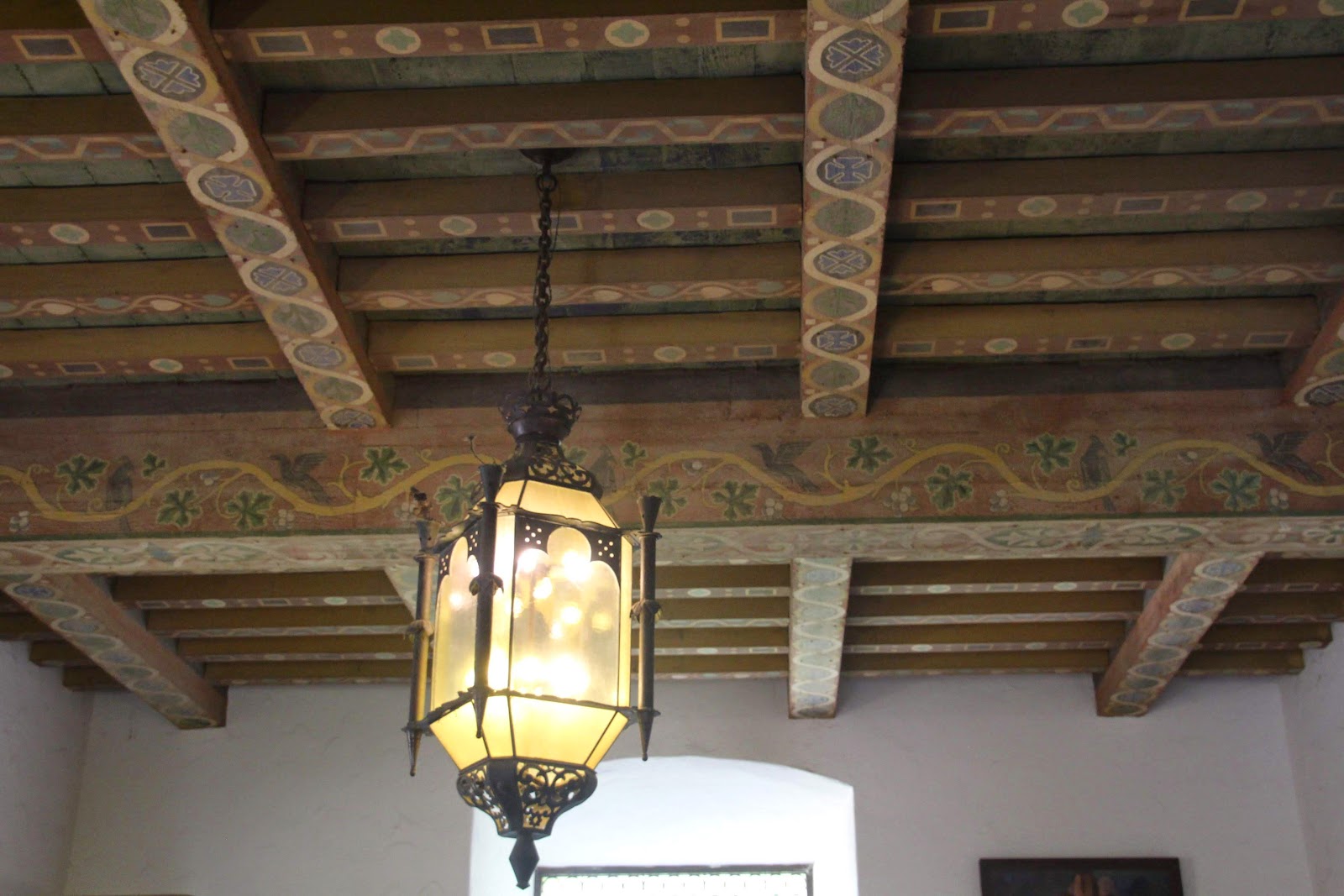
This site has been home of some of the most significant archaeological discoveries of early native people in all of California.
The land was acquired by Don Luis Burton in 1860.
A short drive away we came upon the Hastings Adobe (CHL 559) sometimes called the Trussell-Winchester Adobe (you'll understand why in a moment!)
The adobe was built in 1854 by Captain Horatio Gates Trussell. It is constructed partly of material from the shipwrecked S.S. Winfield Scott.
The S.S. Winfield Scott was a sidewheel steamer that transported goods and passengers between San Fransisco and Panama during the Gold Rush. On December 1, 1853 the ship encountered heavy fog off the coast of Santa Barbara and crashed into Anacapa Island. Happily all passengers and crew survived, but the ship was lost-- it currently is on the ocean floor and is part of the Channel Islands National Park (as well as on the list of National Historic places).
Back to the house... Miss Sarah Winchester (yes the same lady who built the Winchester Mystery House in San Jose) acquired the adobe in 1882 for her niece Katherine Bagg Hastings to live in.
After a breakfast stop we made our way to the Covarrubias Adobe (CHL 308). Built in 1817 by Native American labor for Don Domingo Carrillo this home was occupied for nearly 100 years by descendents of this family.
There is supposed to be a plaque on site, but we walked everywhere around the building and couldn't find one-- perhaps it has been moved inside?
This next building was my favorite of the trip-- such a cool old structure-- welcome to the Santa Barbara County Courthouse (CHL 1037).
The courthouse was built in 1929 and designed by architect William Mooser.
It has been called the grandest Spanish Colonial Revival structure ever built.
From the California Parks website, "It is an extraordinary example of its style, with an elaborate array of detail emulating a Spanish castle or fortress."
There are so many beautiful details inside this building!
You can even see the plaque from above :)
A beautiful view of the mission we saw yesterday!
One the walk up or down you can catch a glimpse of the clock room...
They do tours a few times a day, but we missed it. We will have to come back to experience this from the inside!
Another must-see part of the courthouse is the mural room.
From top to bottom there is something to see!
We pulled ourselves away from all the beauty to continue our adventure... A few blocks away was the Royal Spanish Presidio (CHL 636).
Most of the presidio was lost due to disrepair and the growth of the city-- however they are doing major renovations and have plans to restore all the presidio eventually.
The presidio was established by Governor Felipe de Neve, Padre Serra, and Lietenant Jose Francisco Ortego in April of 1782.
King Carlos III ordered the founding of the presidio to provide the benefits of government for the inhabitants of the Santa Barbara Channel region of California.
This chapel also was the major place to worship before the Mission was completed.
This was a cool find inside the chapel-- a tiny plaque stating that the first Filipino burial in California took place here in 1784.
Included in the Presidio admission costs was Casa de la Guerra (CHL 307). This adobe was the home of the fifth commandant of the Presidio de Santa Barbara, José de la Guerra y Noriega from 1828 until his death in 1858.
1. A common council was elected here on August 26, 1850 (two weeks before California became a state).
2. The City of Santa Barbara held its first official meeting here in 1875 and they erected the first City Hall here.
The plaza was the scene of early Santa Barbara fiestas, and the hospitality at the de la Guerra house set standards for Santa Barbara.
The home is now a museum with period furnishings.
We are now done with Santa Barbara County!












































































0 comments:
Post a Comment